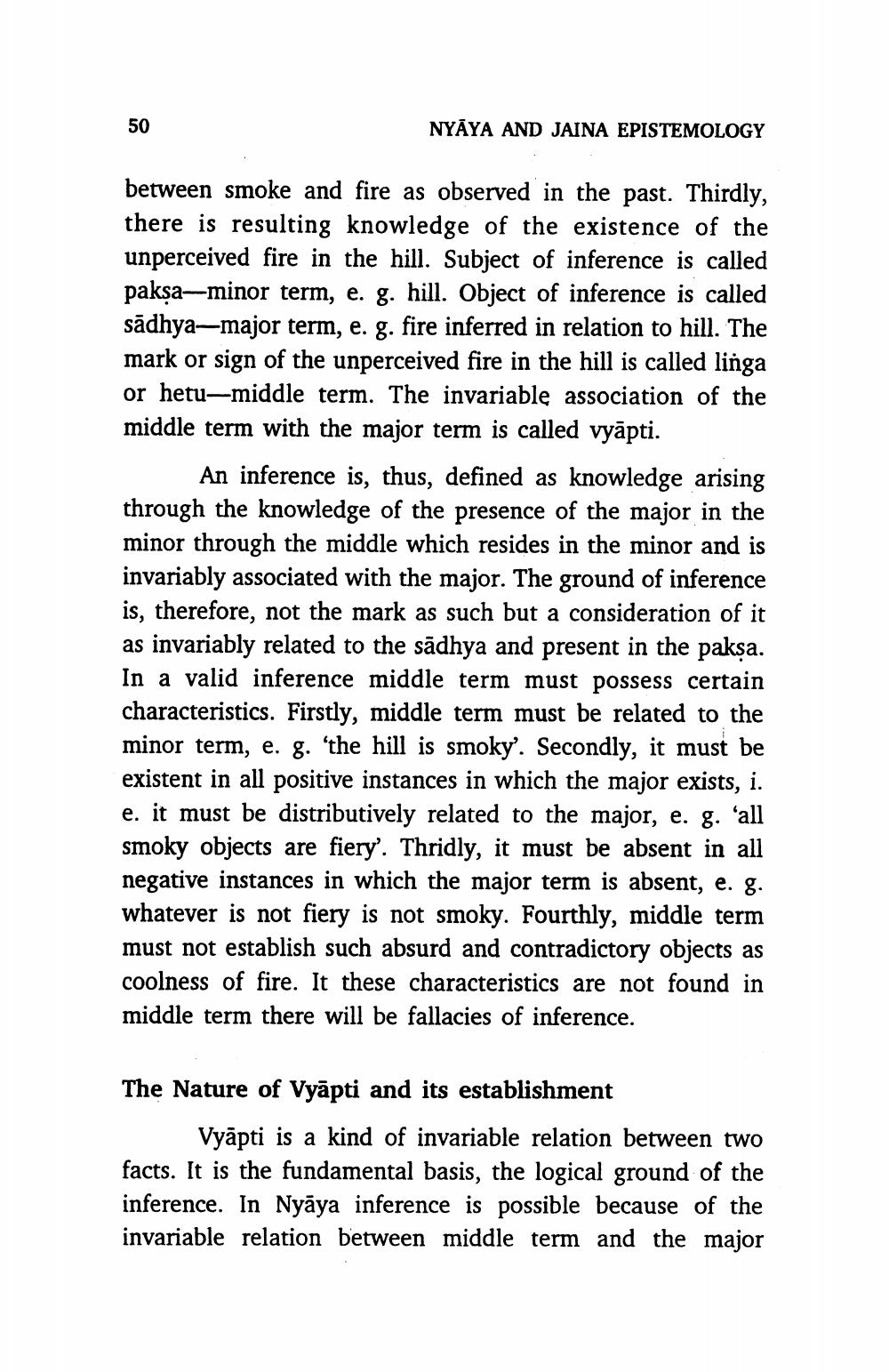________________
50
NYAYA AND JAINA EPISTEMOLOGY
between smoke and fire as observed in the past. Thirdly, there is resulting knowledge of the existence of the unperceived fire in the hill. Subject of inference is called pakṣa-minor term, e. g. hill. Object of inference is called sādhya-major term, e. g. fire inferred in relation to hill. The mark or sign of the unperceived fire in the hill is called linga or hetu-middle term. The invariable association of the middle term with the major term is called vyapti.
An inference is, thus, defined as knowledge arising through the knowledge of the presence of the major in the minor through the middle which resides in the minor and is invariably associated with the major. The ground of inference is, therefore, not the mark as such but a consideration of it as invariably related to the sadhya and present in the paksa. In a valid inference middle term must possess certain characteristics. Firstly, middle term must be related to the minor term, e. g. 'the hill is smoky'. Secondly, it must be existent in all positive instances in which the major exists, i. e. it must be distributively related to the major, e. g. 'all smoky objects are fiery'. Thridly, it must be absent in all negative instances in which the major term is absent, e. g. whatever is not fiery is not smoky. Fourthly, middle term must not establish such absurd and contradictory objects as coolness of fire. It these characteristics are not found in middle term there will be fallacies of inference.
The Nature of Vyāpti and its establishment
Vyāpti is a kind of invariable relation between two facts. It is the fundamental basis, the logical ground of the inference. In Nyaya inference is possible because of the invariable relation between middle term and the major




